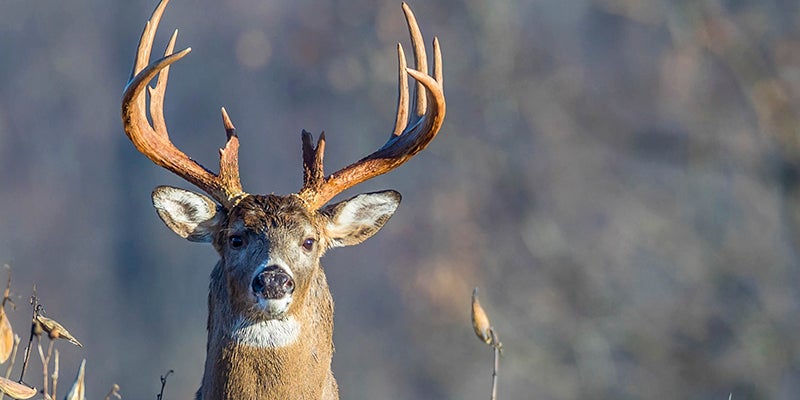CWD testing is mandatory for deer opener in specified zones
Published 6:01 pm Tuesday, October 26, 2021
|
Getting your Trinity Audio player ready...
|
Deer hunters are encouraged to visit the DNR website to make a plan for their season
Minnesota deer hunters in several parts of the state must bring their harvested deer to sampling stations to be tested for chronic wasting disease during the opening weekends of firearms seasons.
Mandatory testing applies to opening weekend of the statewide A season (Saturday, Nov. 6 – Sunday, Nov. 7) and opening weekend of the southeast-only B season (Nov. 20-21). It is part of the Minnesota Department of Natural Resources approach designed to limit the spread of the disease and keep Minnesota’s wild deer healthy.
“Protecting our wild deer is a shared responsibility. Thank you to hunters who help combat CWD by submitting samples,” said Barbara Keller, big game program leader. “These samples provide data that help us better understand the prevalence of the disease in wild deer.”
Hunters only need to know the number of the deer permit area (DPA) where they will be hunting to determine if CWD sampling is required. By visiting mndnr.gov/deerhunt and locating the grouping containing their DPA, hunters can access comprehensive information and resources for planning a successful deer hunt.
Beyond mandatory testing, hunters also need to consider where and how their harvested deer will be processed and whether a field-dressed animal can be legally transported from the deer permit area where it is harvested.
The DNR conducts testing in areas where CWD has been discovered in wild or captive white-tailed deer. Depending on its proximity to known cases of CWD and whether CWD has been found in wild deer, a DPA can be designated a management, control or surveillance zone.
During opening weekends of the A and B deer seasons, any deer one year or older that is harvested from a DPA designated as a CWD zone must be submitted for testing. The only exceptions are DPAs 213 and 273, where DNR is in the second year of evaluating a risk-based surveillance strategy and testing is voluntary. In DPAs 213 and 273, the DNR is collecting samples at self-service stations throughout all deer seasons.
The mandatory sampling requirements mean that after field dressing their deer, hunters in CWD zones need to take them to a sampling station. The DNR will staff sampling stations during mandatory weekends. DNR staff will remove lymph nodes, and the DNR will submit the tissue for laboratory testing. Self-service sampling station options also will be available for hunters who would prefer to drop off their deer heads rather than having staff take the samples at stations. DNR staff will retrieve the heads, remove the lymph nodes and submit the tissue for sampling. Sampling stations are listed on the CWD page.
There are options for hunters who want to have their deer mounted by a taxidermist to get the deer sampled without ruining the cape of the deer. Hunters should check the CWD page for a list of cooperating taxidermists that will sample the deer for the DNR. Hunters can also cape the head themselves prior to bringing it to the sampling location, and a video showing how to cape a deer is on the DNR website.
Hunters must register their deer within 48 hours of harvest and before the deer is processed— whether by phone, internet or in person. Harvest registration will not be available at CWD sampling stations.
Hunters can check for their CWD test results online at mndnr.gov/cwdcheck by entering their nine-digit MDNR number found on licenses and site tags.
All hunters are invited to a webinar about CWD at noon on Wednesday, Oct. 27. Kelsie LaSharr from the DNR wildlife health program and James Burnham, DNR R3 coordinator, will discuss what hunters need to know about this disease and what the DNR is doing to manage it. Registration and more information are available on the DNR website.
Voluntary CWD testing
Outside of opening weekends of firearms deer seasons, voluntary submissions for deer harvested in any CWD management or control zone are being accepted at self-service stations through archery deer season, which is open through Dec. 31. Deer harvested in the surveillance zone can be sampled voluntarily by making appointments at area wildlife offices.
Hunters not in a CWD zone can collect their own lymph node sample and submit it for testing to the Veterinary Diagnostic Laboratory at the University of Minnesota for a fee. A DNR video showing how to collect a lymph node sample is available on the DNR website.
Mandatory carcass movement restrictions
Mandatory carcass movement restrictions are in effect for the CWD management and control zones. Whole carcasses cannot leave these zones until a “not detected” test result is received. Hunters who debone or quarter their deer can transport their harvest immediately before receiving their test result; the DNR will have dumpsters and quartering stations available in the management and control zones to help with disposal of parts that cannot be transported. No carcass movement restrictions are in place in the CWD surveillance zone, where the disease has not been discovered in wild deer.
For more information on CWD, the DNR’s continued efforts to manage the disease and how to help, visit the DNR’s chronic wasting disease management page. Hunters can also find hunting regulations and information about chronic wasting disease regulations and sampling in the 2021 Minnesota Hunting and Trapping Regulations book






